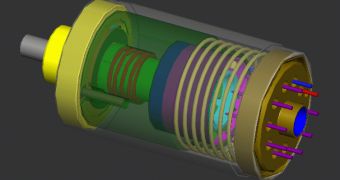A recent report published by research firm iSuppli Corp shows that accelerometers are expected to see a great adoption by next year, and that they will be included in one third of the mobile phones that will come to the market in 2010. According to the firm, this is the result of the important role this feature has in some of the most popular devices on the market, including the iPhone or the high-end Palm Pre.
“By next year, one out of three mobile phones shipped worldwide will include an accelerometer, up from one out of five in 2009, and one out of 11 in 2008,” observed Jeremie Bouchaud, director and principal analyst, Microelectromechanical Systems (MEMS) for iSuppli. “While few consumers know what accelerometers are, they do know that when they turn their iPhones to the side, their screens automatically adjust from portrait to landscape view, or that when they shake their handsets they can roll a pair of virtual dice in a game of chance.”
Bouchaud also added that accelerometers came with the capability of detecting and measuring motion, which turned them into must-be features that enabled the aforementioned functionalities. Furthermore, he also said that some of the hottest smartphones on the market saw impressive traction from users especially given the fact that they packed accelerometers. While smartphones were the first to have them, other handsets are also expected to receive accelerometers in the near future.
3-axis MEMS accelerometers motion sensors are not used in mobile phones exclusively for gameplay and screen orientation; they also offer power management functionalities, and come to the market with shake modes that enable users to control music playback on their phones, as well as with context awareness and pedometers. According to iSuppli, the iPhone 3GS comes with a 3-axis MEMS accelerometer from STMicroelectronics, while the Palm Pre features a Kionix Inc. MEMS accelerometer and inclinometer.
When it comes to the top industry names, the firm says that 38 percent of new Nokia handsets come with motion-sensing accelerometers since January, while Sony Ericsson included the feature in 18 out of 19 handsets launched during the ongoing year. Other manufacturers, including Samsung and LG, also came to the market with mobile phones that packed accelerometers. Overall, 18.3 percent of the new devices launched this year included the sensors.

 14 DAY TRIAL //
14 DAY TRIAL //